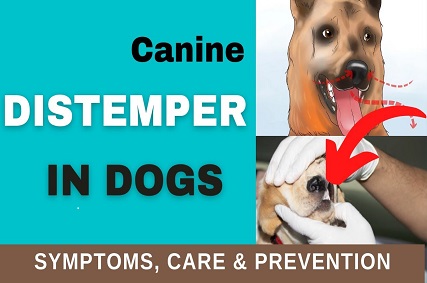
Canine distemper is a contagious and serious disease caused by a virus that attacks the respiratory, gastrointestinal and nervous systems of puppies and dogs.
The virus can also be found in wildlife such as foxes, wolves, coyotes, raccoons, skunks, mink and ferrets and has been reported in lions, tigers, leopards and other wild cats as well as seals.

How is canine distemper spread?
Puppies and dogs most often become infected through airborne exposure (through sneezing or coughing) to the virus from an infected dog or wild animal. The virus can also be transmitted by shared food and water bowls and equipment. Infected dogs can shed the virus for months, and mother dogs can pass the virus through the placenta to their puppies.
Because canine distemper also impacts wildlife populations, contact between wild animals and domestic dogs can facilitate the spread of the virus. Canine distemper outbreaks in local raccoon populations can signal increased risk for pet dogs in the area.
Initially, infected dogs will develop watery to pus-like discharge from their eyes. They then develop fever, nasal discharge, coughing, lethargy, reduced appetite, and vomiting. As the virus attacks the nervous system, infected dogs develop circling behavior, head tilt, muscle twitches, convulsions with jaw chewing movements and salivation (“chewing gum fits”), seizures, and partial or complete paralysis. The virus may also cause the footpads to thicken and harden, leading to its nickname “hard pad disease.”
In wildlife, infection with canine distemper closely resembles rabies.
Distemper is often fatal, and dogs that survive usually have permanent, irreparable nervous system damage.
Veterinarians diagnose canine distemper through clinical appearance and laboratory testing. There is no cure for canine distemper infection. Treatment typically consists of supportive care and efforts to prevent secondary infections; control vomiting, diarrhea and neurologic symptoms; and combat dehydration through administration of fluids. Dogs infected with canine distemper must be separated from other dogs to minimize the risk of further infection.
Copyright © Quicking Biotech Co., Ltd. All Rights Reserved Sitemap |